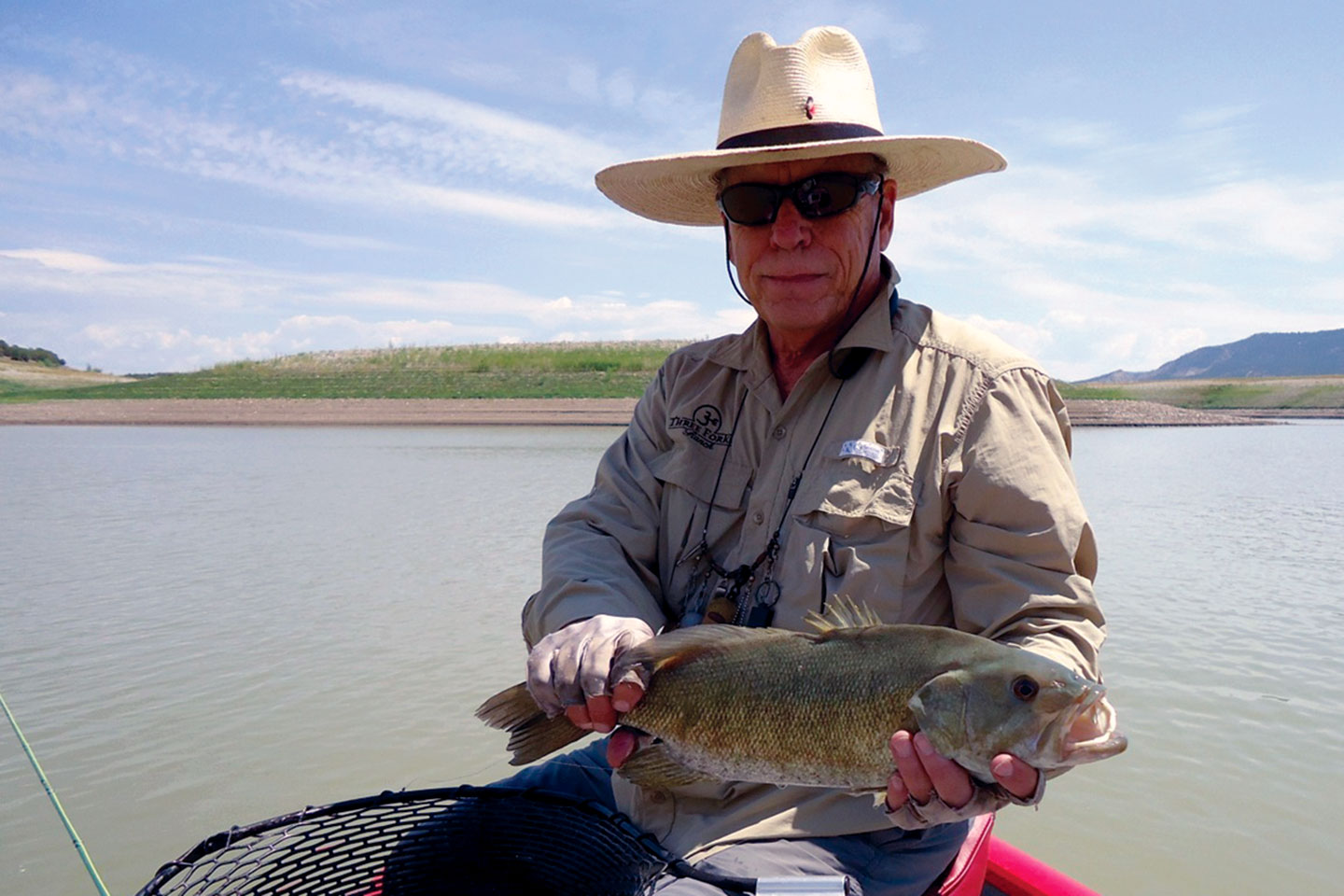I have been known to cast a fly at most anything. However, the tiger referred to in the title is not a fly fisherman-eating mammal, but a fish, a trout no-less. Until three weeks ago, I had never heard of a tiger trout. That’s when I was on a cast and blast trip to Utah and was introduced to this trout during the casting part.
This species caught (pun intended) my attention, so using the very reliable source of the internet I have found some interesting facts about the tiger trout. To begin, it is a cross between a female brown trout and a male brook trout that is artificially bred. It cannot breed in the wild, so the eggs and milt are introduced to each other in a hatchery. Once the cross is made a fish is produced that has an unusual body pattern. For the life of me I don’t see any resemblance in its body pattern and coloring to that of a tiger. It’s more of a free form instead of black stripes on a yellow back ground. However, maybe its eating habits are what gives it its name.
It turns out that tiger trout are resistant to whirling disease and are very predatory. They are piscivorous (fish eating) and are good at helping to keep populations of rough fish down. They love to eat suckers and stunted brook trout. So when released into lakes and rivers they help to increase a healthy trout population. Maybe they could have been used on Hermosa Creek, instead of rotenone. That way we could have had two species that get along and aren’t a threat to each other. Its eating habits and aggressiveness are what make the tiger trout popular with fly fishermen.
Tiger trout have been in Colorado for about 25 years. And, apparently, were first produced by Greg Brunajak at Mount Massive Lakes, a private fishing club near Leadville. They can now be found in almost all of the western and mid-western states. According to the Colorado Parks & Wildlife website they are in 30 Colorado lakes and reservoirs, including Vallecito. The Arizona Game and Fish Department is also stocking tigers. They have acquired 18,000 tiger fingerlings from the Utah Division of Wildlife.
While tiger trout don’t grow to the size of large browns, they do put on weight and inches by eating all the suckers and stunted brooks. Depending on which web site you believe the Colorado state record for a tiger trout was either two 23-inch fish caught on Spring Lake, or a 23 and 3/4 inch tiger weighing 5 pounds and 3 ounces caught on Deep Slough Reservoir. Either way, those were big fish. The ones I caught were not nearly that large.
The tigers I caught were at the Falcon’s Ledge in Altamont, Utah. As stated above, tigers are created in hatcheries, so the ones at Falcon’s Ledge were stocked. However, don’t let the term “stocked pond” fool you into thinking fishing for the them is a walk in the park. They are aggressive and hard hitting; I found I had to be quick on the hook set. I was able to catch tigers on Wooly Buggers and Irresistibles. Being an aggressive fish, the tigers were just as likely to be found in shallow, water as well as the deeper parts of the pond. Given the usual size of the tigers a 3 or 4-weight rod is ample. I also suggest using a floating line with a 9-foot 4X-leader. They’re not leader shy, so as they fray the leader with big sharp teeth don’t get overly concerned with having to tie on tippet.
So, for 2017 I have an aggressive, voracious eating, beautiful, trout to go after. It can be found in ponds, lakes, and rivers. Further, while not reproducing on its own, it does prosper and keeps the unhealthy fish population down. This is a win-win if there ever was one.

